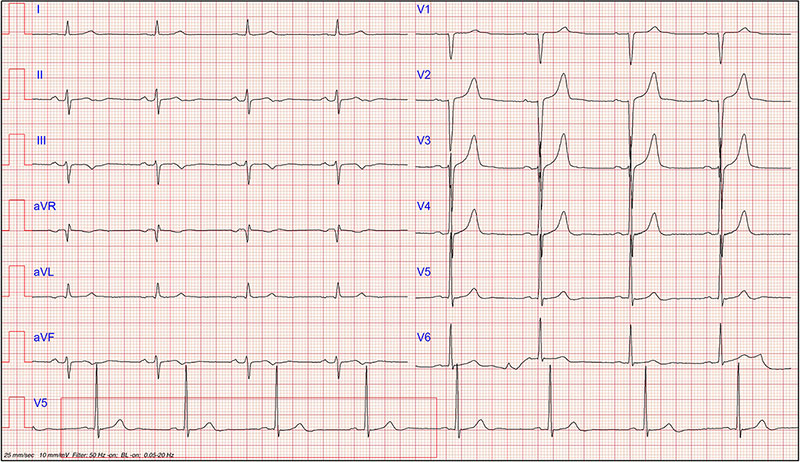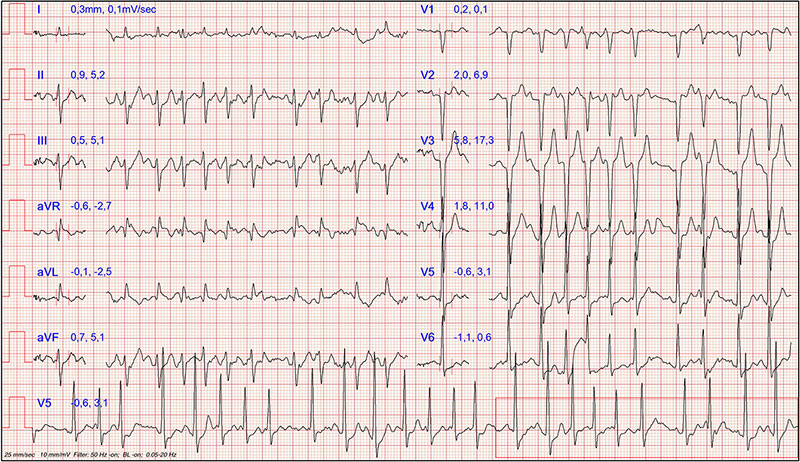The case
Pre-participation screening in a 57-year-old cyclist
A 57-year-old Caucasian man underwent pre-participation cardiac screening with ECG-monitored exercise stress testing for competitive sports eligibility, as required by the Italian legislation:
- He was a non-smoker and physically active person who reported cycling about 10,000 km per year.
- He was asymptomatic and denied heart palpitations, syncope, and any further cardiac-related symptoms.
- His past medical history was unremarkable, except for a mild mitral valve prolapse (MVP) with preserved ejection fraction (EF) and mild left atrium dilatation.
- His family history was negative for sudden death and ischaemic heart disease.
Auscultation revealed a regular heart rhythm with a mid-systolic click. Examination of lungs and abdomen were normal. Height was 183 cm, weight 69 kg (BMI= 20,6 kg/m2), blood pressure 120/75 mmHg.
Figure 1:
Resting 12-lead ECG – sinus rhythm, V1-V3 with poor R wave progression, left ventricular hypertrophy, left axis deviation.

Figure 2:
Peak stress ECG: the subject underwent incremental cycle ergometer testing. He reached the maximum load at 285 watts and presented this peak ECG.

Test your knowledge
Note: The views and opinions expressed on this page are those of the author and may not be accepted by others. While every attempt is made to keep the information up to date, there is always going to be a lag in updating information. The reader is encouraged to read this in conjunction with appropriate ESC Guidelines. The material on this page is for educational purposes and is not for use as a definitive management strategy in the care of patients. Quiz material on the site are only examples and do not guarantee outcomes from formal examinations.




 Our mission: To reduce the burden of cardiovascular disease.
Our mission: To reduce the burden of cardiovascular disease.